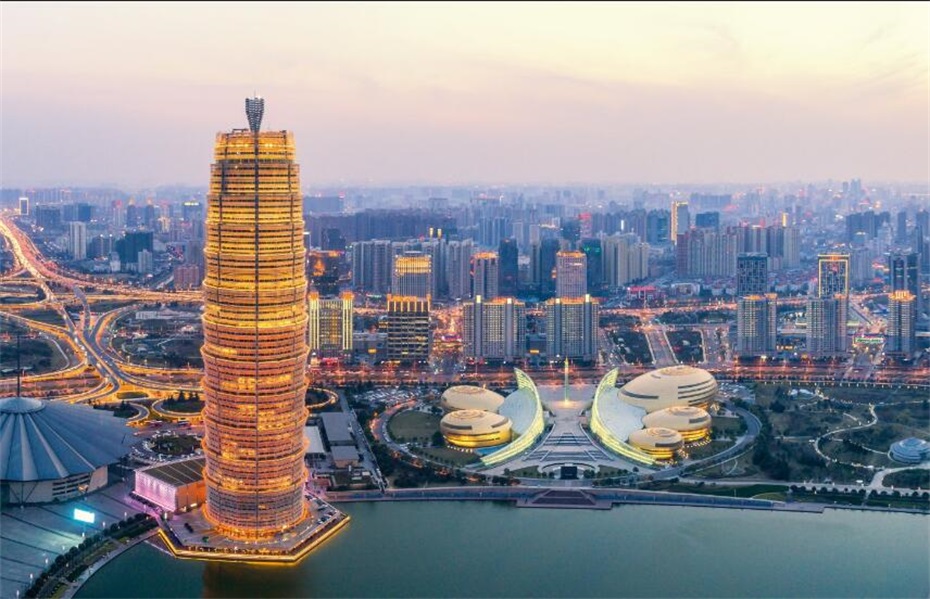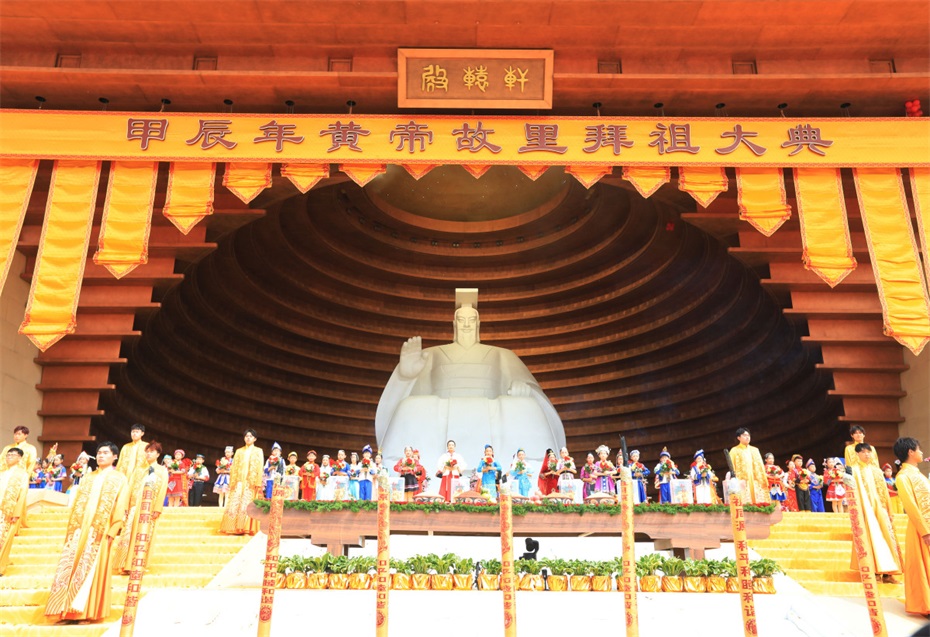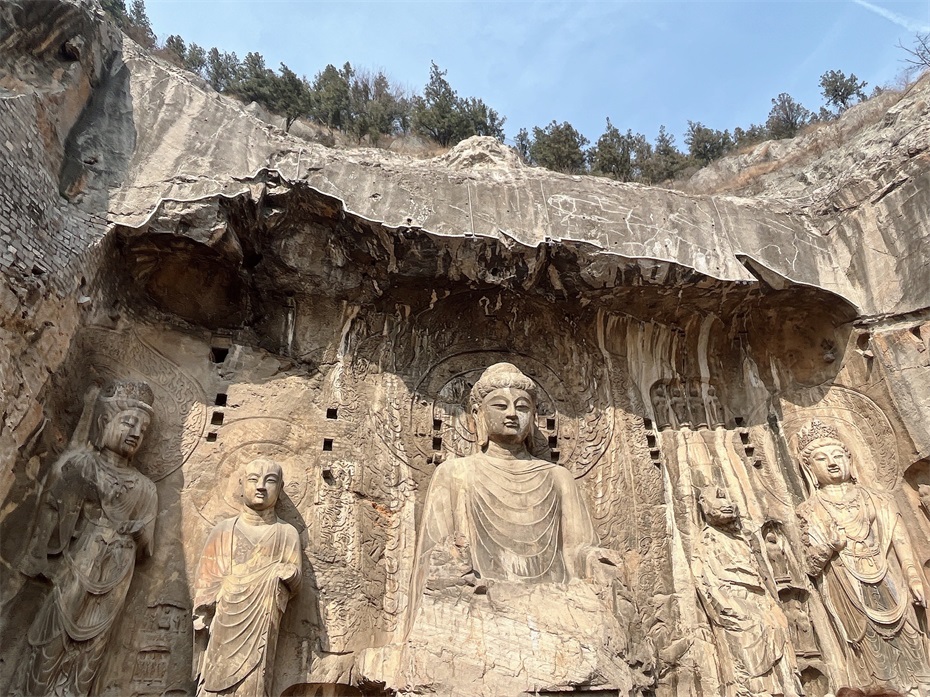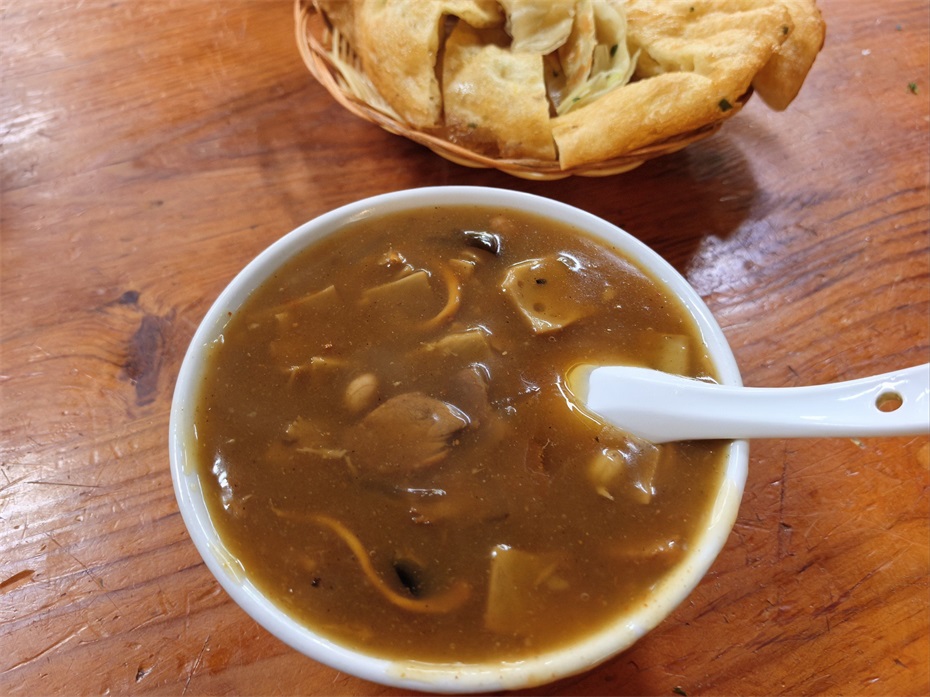Henan Province
Overview of Henan Province

Henan Province, abbreviated as "Yu", is located in central China, in the middle and lower reaches of the Yellow River, and is known as the "Central Plains" and "Zhongzhou". The total area of the province is 167000 square kilometers, with 17 prefecture level cities and 1 provincial-level county-level city under its jurisdiction. The permanent population is 98.72 million people (2022 data), making it the third most populous province in China. In 2022, the total regional GDP of the province reached 6.13 trillion yuan, ranking fifth in the country. The grain output has remained stable at over 130 billion catties for six consecutive years, making it an important grain production base and economic powerhouse in China.
Henan Province currently governs 17 prefecture level cities including Zhengzhou (provincial capital), Kaifeng, Luoyang, Pingdingshan, Anyang, Hebi, Xinxiang, Jiaozuo, Puyang, Xuchang, Luohe, Sanmenxia, Nanyang, Shangqiu, Xinyang, Zhoukou, and Zhumadian, as well as Jiyuan City. As an important birthplace of the Chinese nation and civilization, Henan is known as the "half of Henan's history and half of China's history". More than 20 dynasties have established their capitals here in history, making it the province with the largest number of ancient capitals in China.
2¡¢ Geographical features
1. Location characteristics
Henan Province is located between 31 ¡ã 23 '-36 ¡ã 22' north latitude and 110 ¡ã 21 '-116 ¡ã 39' east longitude. It borders Anhui and Shandong to the east, Hebei and Shanxi to the north, Shaanxi to the west, and Hubei to the south. The province is located in the transitional zone from the second to the third tier of China, and is an important comprehensive transportation hub and logistics center in the country.
2. Terrain and landforms
The terrain of the whole province is high in the west and low in the east:
Western region: Taihang Mountains, Funiu Mountains, Tongbai Mountains and other mountainous areas
Central and Eastern regions: Huang Huai Hai alluvial plain
Southern region: Nanyang Basin
The highest peak: Lao Ya Cha Long (altitude 2413.8 meters)
3. Water system distribution
The Yellow River System: Spanning the Central Region
Huai River system: the main water system in the southern region
Haihe River System: Northern Regions
Yangtze River system: Tangbai River in the southwest
4. Climate characteristics
Belonging to warm temperate subtropical monsoon climate:
Annual average temperature: 12-16 ¡æ
Annual precipitation: 500-900 millimeters
Significant features: distinct four seasons, simultaneous rain and heat
3¡¢ Historical context
1. Origin of Civilization
Paleolithic Age: Nanzhao Ape Man Site (500000 years ago)
Neolithic Age: Peiligang Culture (8000 years ago)
During the Xia, Shang, and Zhou dynasties: Erlitou Site and Yin Ruins
2. Organizational history
Pre Qin period: Yuzhou, the center of Kyushu
Qin and Han Dynasties: Henan Commandery was established
During the Tang and Song dynasties: Luoyang in the east and Kaifeng in the east
Yuan, Ming, and Qing Dynasties: Establishment of Henan Province System
3. Modern and Contemporary Development
1912: Henan Province was officially established
In 1954, the provincial capital was relocated from Kaifeng to Zhengzhou
Reform and Opening Up: Leap from an Agricultural Province to an Economic Province
21st Century: Implementation of the Central Rise Strategy
4¡¢ Cultural Essence
1. Regional cultural characteristics
Heluo Culture: The Source of Chinese Civilization
Central Plains Culture: The Core of Chinese Culture
Shangdu Culture: Oracle Bone Inscriptions from the Yin Ruins
Rooted culture: the main birthplace of Chinese surnames
2. Intangible Cultural Heritage

Folk Art: Zhuxian Town Woodblock New Year Paintings, Bian Embroidery
Traditional techniques: Jun porcelain firing, Ru porcelain craftsmanship
Folk Culture: Ancestral Worship Ceremony in Huangdi's Hometown, Majie Book Fair
3. Dialect characteristics
Zhongyuan Mandarin: Most parts of the province
Jin dialect: Northern regions
Jianghuai Mandarin: Southern Xinyang Region
5¡¢ Tourist destinations
1. World Heritage Sites

Yin Xu in Anyang
Silk Road (Henan section)
Grand Canal (Henan section)
2. 5A level scenic spot
Zhengzhou Songshan Shaolin Temple Scenic Area
Luoyang Longmen Grottoes Scenic Area
Jiaozuo Yuntai Mountain Shennong Mountain Qingtian River Scenic Area
Yin Xu in Anyang Scenic Spot
Kaifeng Qingming Shanghe Garden
3. Featured tourism
Ancient Capital Cultural Tour: Zhengzhou, Luoyang, Kaifeng, Anyang
Kung Fu Experience Tour: Shaolin Temple, Chenjiagou
Roots and Ancestors: Huangdi's Hometown and Surname Cultural Park
Landscape leisure tour: Yuntai Mountain, Laojun Mountain
6¡¢ Food map
1. Characteristics of Yu cuisine
Zhengzhou: Braised Noodles, Yellow River Carp
Kaifeng: Steamed buns with soup, canned chicken
Luoyang: Water mats, no turning soup
Xinyang: Nanwan fish head, canned meat
2. Featured snacks

Daokou roasted chicken
Xiaoyao Town soup with pepper
Puyang Zhuangmo
Lingbao Roujiamo
3. Specialty drinks
Xinyang Maojian Tea
Du Kang Wine
xinzheng jujube
Huaiyang yellow cauliflower
7¡¢ Development Status
1. Industrial system
Agriculture: the top grain processing province in China
Industry: Leading in equipment manufacturing and food manufacturing
Logistics Industry: Zhengzhou Airport Economic Comprehensive Experimental Zone
Cultural Industry: Demonstration Zone for Cultural Tourism Integration
2. Transportation network
Aviation: Zhengzhou Xinzheng International Airport (among the top 40 global cargo airports)
High speed railway: "Mi" shaped high-speed railway hub
Highway: Over 8000 kilometers of highways have been opened to traffic
Water Transport: Shaying River Resumption Project
3. Open platform
China (Henan) Pilot Free Trade Zone
Zhengzhou Luxembourg 'Air Silk Road'
China Europe Railway Express (Zhengzhou) Assembly Center
Cross border E-commerce Comprehensive Pilot Zone
From the banks of the Yellow River to the Funiu Mountains, from the oracle bones of the Yin ruins to the Zhengzhou East Railway Station, this hot land in the "heaven and earth" is writing a more brilliant chapter of the Central Plains in the new era with a vigorous and outstanding attitude. There is both the profundity of "reaching out for the spring and autumn culture, stepping on two feet is the Qin brick and Han tile", and the openness of "buying the world and selling the world", which is becoming an important window to show Chinese path to modernization.
simliy
